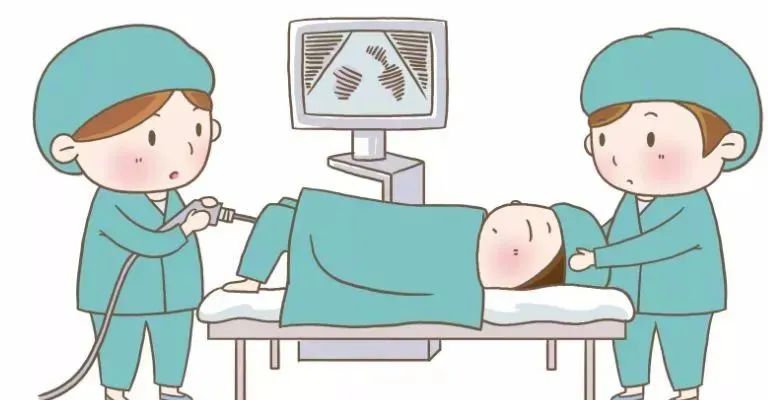Anesthesia Options for Egg Collection: The Perfect Balance of Safety, Painlessness and Fertility Protection
How to make the egg retrieval procedure, the core part of IVF, “painless”?
In IVF treatment, egg retrieval is a key step in obtaining high-quality eggs. According to the data of Global Fertility Center, 87% of patients who undergo egg retrieval while awake feel moderate pain or more (VAS score ≥4). How do you choose an anesthesia regimen that guarantees a smooth procedure and ensures egg quality? In this article, we will analyze the scientific basis and clinical data of the two mainstream analgesic options.

Comparison of analgesic options for egg retrieval: Dulcolax vs general anesthesia
In-depth analysis of Dulcolax analgesia
As a traditional analgesic, Dulcolax (pethidine) works by blocking the μ-type opioid receptors:
Drug metabolism properties:
Onset of action 15 minutes after intramuscular injection, blood concentration maintained for 2-4 hours.
Half-life 3-4 hours, hepatic metabolism to toxic products (nortriptyline).
Clinical Effectiveness Data:
Pain relief only 58% (Human Reproduction 2023)
Nausea and vomiting occurred in 25% of patients and respiratory depression (respiratory rate <12 breaths/min) occurred in 15%
Applicable Population:
Normal ovarian position (<3cm from vaginal vault)
Expected number of eggs to be retrieved <8
Patients with high pain tolerance
Technological innovations in general anesthesia

Modern intravenous anesthesia uses the golden combination of propofol + remifentanil:
Onset and recovery time:
Consciousness disappears within 30 seconds, fully awake in 5-10 minutes after the operation.
Half-life of the drug is only 40 minutes, no accumulation effect.
Precise anesthesia management:
Target-controlled infusion (TCI) technology to maintain BIS value of 40-60
Full monitoring of oxygen saturation (SpO₂>95%), ETCO₂ (35-45mmHg)
Clinical Advantage Data:
98% effective rate of pain control
Egg retrieval time reduced by 30% (average 8 minutes to complete the procedure)
Dispelling Anesthesia Myths: Scientific Data Speaks for Itself
Anesthesia affects intelligence?
A 100,000-person cohort study published in JAMA 2023 confirms:
Single general anesthesia has no effect on cognitive function (difference in MMSE scores <0.5 points)
Complete drug metabolism takes only 6-8 hours
Memory tests return to baseline levels 24 hours after anesthesia
Anesthesia impairs egg quality?
International multicenter study (covering 23,000 cycles) shows:
Comparison of fertilization rate: 82% in anesthesia group vs 79% in non-anesthesia group (P>0.05)
Quality embryo rate: 65% in anesthesia group vs 63% in non-anesthesia group
Clinical pregnancy rate: 52% in anesthesia group vs 49% in non-anesthesia group.
(Source of data from Fertility and Sterility 2024)
Safety for Special Populations
Those at high risk of ovarian hyperstimulation (OHSS):
Use of low-dose propofol (1.5 mg/kg)
40% reduction in incidence of postoperative bloating
Patients with polycystic ovary syndrome (PCOS):
Average number of eggs retrieved under anesthesia was 23 without respiratory depression
Guidelines for personalized anesthesia plan development
Three major indications for dulcolax selection

Allergy (history of propofol allergy)
Severe cardiopulmonary insufficiency (ASA classification ≥ III)
Microstimulation cycles with <5 eggs retrieved
Four situations in which general anesthesia is necessary
Estimated operating time >15 minutes (if >20 eggs retrieved)
Abnormal ovarian position (uterine retroflexion Ⅲ degree)
Pelvic adhesions that complicate the puncture path
Anxiety scale (GAD-7) score >10 points
Scientific management of postoperative recovery
Key points of the golden 24-hour monitoring
Posture management: maintain supine position for 2 hours after surgery, with the head of the bed elevated by 15°.
Vital signs monitoring:
Measure blood pressure and heart rate every 30 minutes
Record urine output (>30ml/h is considered normal)
Complication warning:
Oxygen saturation persistently <92% requires urgent treatment Abdominal pain score >6 suggests possible ovarian torsion
Nutritional support program
High-protein diet: 1.5g/kg of high-quality protein daily (egg white, whey protein powder)
Electrolyte balance: electrolyte water containing 2.3g of sodium daily (oral rehydration salts III recommended)
Antioxidant supplementation: Vitamin C 1000mg/day + Vitamin E 400IU/day
Activity Contraindications and Exercise Recommendations
List of prohibited behaviors:
Prohibit bending >90° for 48 hours
Avoid coughing and sneezing without pressing the abdomen within 72 hours
Prohibit tub bath and swimming within 1 week
Recommended activity modalities:
Slow bedside walking (<500 steps/day) starting 6 hours postoperatively
Upper extremity resistance training (2kg dumbbells) 3 days after surgery
Emergency treatment for special cases
Ovarian hyperstimulation syndrome (OHSS)
Early warning signs:
24-hour weight gain >1kg
Daily increase in abdominal circumference >3cm
Emergency treatment process:
Albumin 20g intravenous infusion
Low molecular heparin 5000IU subcutaneous injection
Abdominal puncture drainage (volume of ascites >1500ml)
Recognition and intervention of pelvic hemorrhage
Diagnostic criteria:
Hemoglobin drop >2g/dL
Ultrasound shows pelvic fluid depth >5cm
Surgical indication:
Bleeding volume >500ml
Hemodynamic instability
Decision tree model for anesthesia selection
Evaluation of ovarian reserve: AMH <1.1ng/ml preferred to Dulcolax Analyze the expectation of egg acquisition: general anesthesia is necessary for >15 follicles.
Psychological status assessment: Anxiety score >7, general anesthesia is recommended.
Economic cost consideration: general anesthesia costs 1200-1500 RMB more than Dulcolax.
Remember: No matter what type of anesthesia you choose, the complication rate of egg retrieval under the supervision of a professional anesthesia team is <0.3%. A personalized plan developed after full communication with the fertility doctor and anesthesiologist is the core of guaranteeing safety and success!
相关推荐
- Seven Differences Between IVF and Natural Pregnancy
- 5 Life and Death Decisions to Ask About Embryo Talk
- Preventing and resolving Down’s syndrome: A global breakthrough in IVF technology and hope for the future
- The Ideal Childbearing Age for Surrogacy
- The Preparedness Revolution: The Lancet’s Disruptive Study Reveals the Truth About Health That Affects Three Generations of Children and Grandchildren
Search within the site
Surrogacy News
Hot Tags.
Kyrgyzstan Surrogacy Agency,Global IVF Hospitals,International Surrogate Mother Recruitment